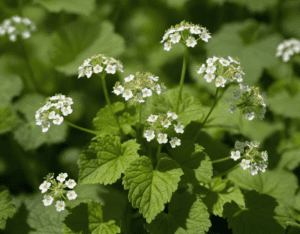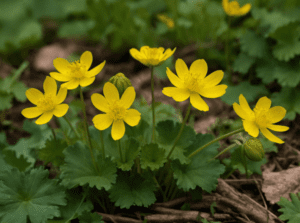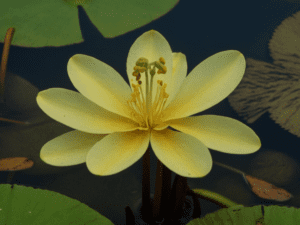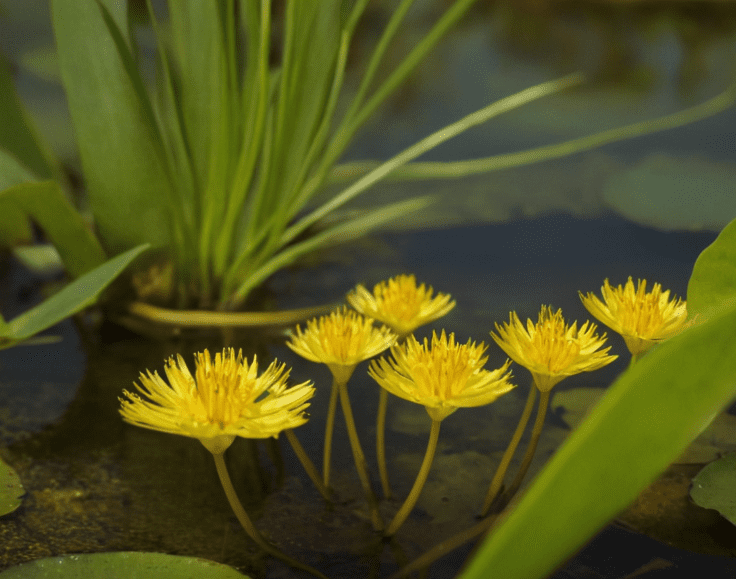Invasive plants with heart-shaped leaves are a significant concern for gardeners and environmentalists alike. These plants can spread rapidly, outcompete native vegetation, and disrupt ecosystems. Some of the most notable invasive plants with heart-shaped leaves include garlic mustard, lesser celandine, and the yellow floating heart.
Garlic Mustard: A Persistent Invader
Garlic mustard (Alliaria petiolata) is a biennial herb native to Europe. It was introduced to North America in the 1800s for medicinal and culinary purposes. However, it has since become a problematic invasive species, particularly in woodland areas. Garlic mustard produces a rosette of heart-shaped leaves in its first year and a tall flowering stalk in its second year.

| Garlic Mustard Information | Details |
|---|---|
| Scientific Name | Alliaria petiolata |
| Common Name | Garlic Mustard |
| Origin | Europe |
| Lifecycle | Biennial |
| Identifying Features | Heart-shaped leaves, white flowers |
| Habitat | Woodlands, disturbed areas |
| Control Methods | Hand-pulling, herbicides |
| Reference | Pocono Record |
Garlic mustard poses a threat to native plants by producing chemicals that inhibit the growth of other species. This phenomenon, known as allelopathy, allows garlic mustard to dominate and alter native plant communities. Effective control methods include hand-pulling before seed set and applying herbicides to larger infestations.
Garlic Mustard Alternatives
Garlic mustard is a persistent invader of woodland areas. Here are some native alternatives that can thrive in similar conditions:
- Wild Ginger (Asarum canadense): This low-growing, shade-tolerant plant has heart-shaped leaves and produces unique, brownish-purple flowers.
- Jack-in-the-Pulpit (Arisaema triphyllum): While not strictly heart-shaped, the unique foliage of this plant adds interest to woodland gardens.
- Mayapples (Podophyllum peltatum): Although the leaves are divided, they offer a similar overall shape and provide a groundcover effect.
Lesser Celandine: A Springtime Menace
Lesser celandine (Ficaria verna) is another invasive plant with heart-shaped leaves. Native to Europe and Asia, it was introduced to North America as an ornamental plant. Lesser celandine forms dense mats of vegetation that can outcompete native spring ephemerals.

| Lesser Celandine Information | Details |
|---|---|
| Scientific Name | Ficaria verna |
| Common Name | Lesser Celandine |
| Origin | Europe, Asia |
| Lifecycle | Perennial |
| Identifying Features | Heart-shaped leaves, yellow flowers |
| Habitat | Moist woodlands, floodplains |
| Control Methods | Herbicides, manual removal |
| Reference | Portland Government |
Lesser celandine is particularly challenging to control due to its extensive root system and ability to reproduce via tubers. Chemical control with herbicides like glyphosate is often necessary for large infestations. Manual removal is possible but requires thorough excavation to remove all tubers.
Lesser Celandine Alternatives
Lesser celandine is a spring ephemeral that quickly takes over moist areas. Consider these native replacements:
- Marsh Marigold (Caltha palustris): This showy plant produces bright yellow flowers and has growth habits similar to those of lesser celandine.
- Virginia Bluebells (Mertensia virginica): With delicate blue flowers and attractive foliage, Virginia bluebells are a beautiful alternative.
- Bloodroot (Sanguinaria canadensis): Known for its white flowers and distinctive lobed leaves, bloodroot is a popular choice for woodland gardens.
Yellow Floating Heart: An Aquatic Invader
Yellow floating heart (Nymphoides peltata) is an invasive aquatic plant that can form dense mats on the surface of water bodies. This plant is native to Europe and Asia and was introduced to North America as an ornamental water garden plant. Yellow floating heart has heart-shaped leaves and bright yellow flowers.

| Yellow Floating Heart Information | Details |
|---|---|
| Scientific Name | Nymphoides peltata |
| Common Name | Yellow Floating Heart |
| Origin | Europe, Asia |
| Lifecycle | Perennial |
| Identifying Features | Heart-shaped leaves, yellow flowers |
| Habitat | Ponds, lakes, slow-moving rivers |
| Control Methods | Mechanical removal, herbicides |
| Reference | University of Minnesota Extension |
Yellow floating heart can obstruct waterways, outcompete native aquatic plants, and alter water quality. Management options include mechanical removal and the use of aquatic herbicides. Preventing the spread of this invasive species is crucial, as it can easily propagate through fragments.
Yellow Floating Heart Alternatives
The yellow floating heart is an invasive aquatic plant that can dominate ponds and lakes. Native alternatives include:
- White Water Lily (Nymphaea odorata): This classic aquatic plant offers beautiful white flowers and large, floating leaves.
- Yellow Pond Lily (Nuphar advena): Producing bright yellow flowers, this native lily can provide a similar aesthetic to the invasive species.
- Native Watermilfoil (Myriophyllum spp.): While not a floating plant, native watermilfoil species can offer underwater structure and oxygenation for aquatic ecosystems.
Note: When selecting native alternatives, it’s essential to choose plants that are suitable for your specific growing conditions, such as soil type, sunlight, and moisture levels. Local native plant nurseries or botanical gardens can guide appropriate species for your area.
FAQs About Invasive Plants with Heart-Shaped Leaves
Q: Why are invasive plants with heart-shaped leaves a problem?
These invasive plants can outcompete native species, disrupt ecosystems, and cause economic damage by affecting agriculture and forestry.
Q: How can I identify garlic mustard?
Garlic mustard can be identified by its heart-shaped leaves, white flowers, and garlic-like odor when crushed.
Q: What is the best way to control lesser celandine? A: The best way to control lesser celandine is by applying herbicides like glyphosate or manually removing the plants, ensuring all tubers are excavated.
Q: Can yellow floating heart harm aquatic environments?
Yes, yellow floating heart can form dense mats that obstruct waterways, outcompete native plants, and negatively impact water quality.
Q: Are there any native plants with heart-shaped leaves?
Some native plants, such as violets (Viola spp.), have heart-shaped leaves. It is essential to distinguish these from invasive species.
Q: How can I prevent the spread of invasive plants in my garden?
Preventing the spread involves proper identification, timely removal, and avoiding introducing non-native ornamental plants.
Q: What should I do if I find an invasive plant with heart-shaped leaves on my property?
If you find an invasive plant on your property, promptly remove it using appropriate methods and dispose of the plant material properly to prevent further spread.
Q: Are there any biological controls for these invasive plants?
Currently, these invasive plants have limited biological control options. Research is ongoing to find effective biological control agents.
Q: How do invasive plants affect local wildlife?
Invasive plants can reduce habitat quality and availability for local wildlife, leading to declines in native species populations.
Q: Can invasive plants with heart-shaped leaves be used for beneficial purposes?
While some invasive plants have historical uses for food and medicine, their negative impacts on ecosystems outweigh their potential benefits. It is best to focus on native and non-invasive alternatives.
Conclusion
Recognizing and controlling invasive heart-shaped plants like garlic mustard, lesser celandine, and yellow floating heart is essential for preserving native ecosystems. By understanding the characteristics of these aggressive invaders and implementing effective control methods, homeowners and land managers can help protect biodiversity and restore ecological balance.
Early detection and prompt action are crucial in preventing the spread of these harmful plants. Let’s work together to identify and eliminate invasive heart-shaped plants in our communities.



























